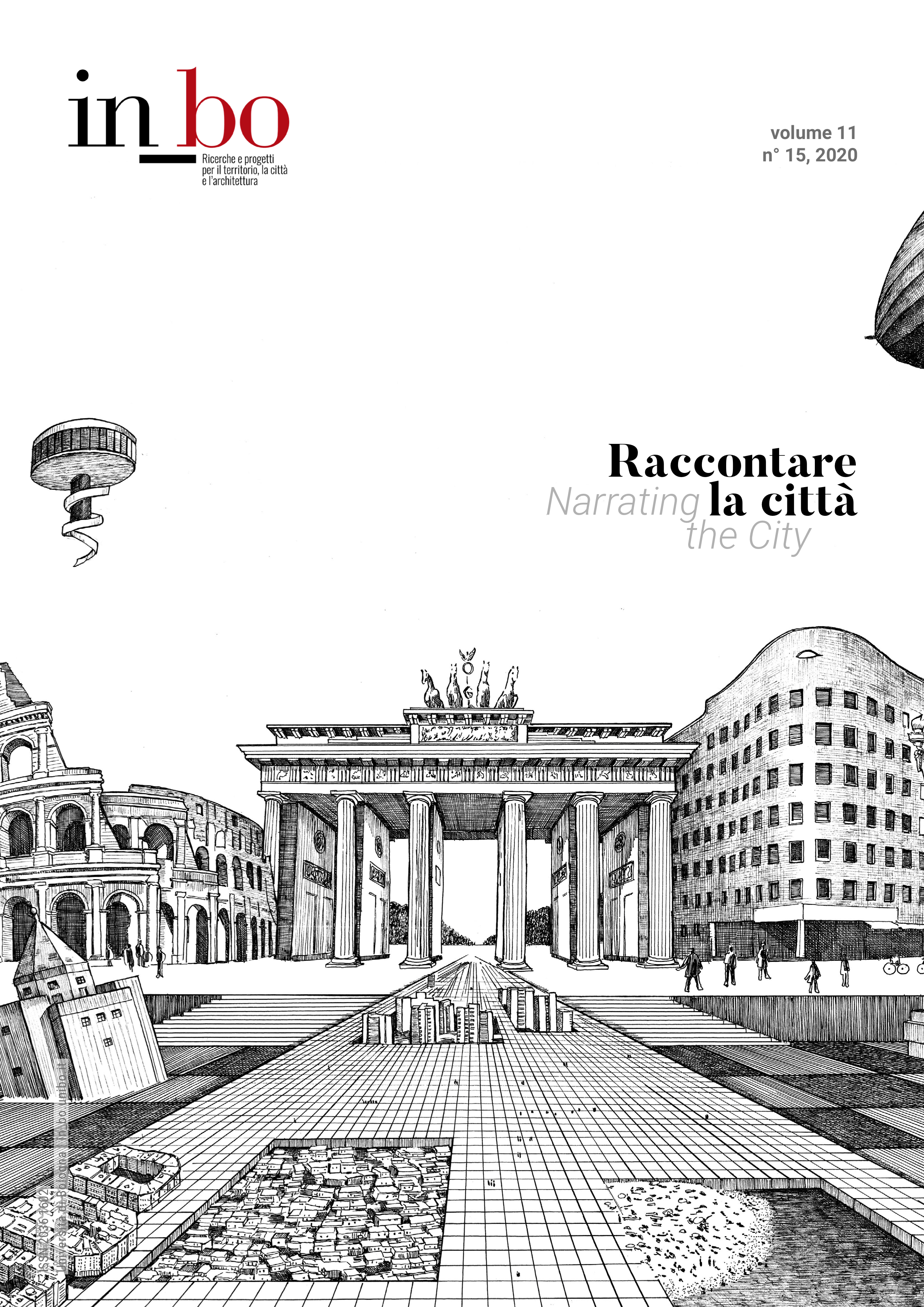B.
DOI:
https://doi.org/10.6092/issn.2036-1602/11714Keywords:
ruins, narrative friction, collages, catastrophe, modernityAbstract
A series of four images, accompanied by a text in three acts, stages the story of a city and its double, rebuilt after an earthquake. Starting from the image of a city hit by a trauma, ROBOCCOP’s collages reconstruct the fragments of its ruins, reopening the fate of buildings, both modern and ancient. The shaking of the ground on which the city is founded builds two urban forms: the first is what remains, scars onto which the authors lay a golden veil; the second is the reconstruction allowed by the earthquake’s tabula rasa, a city born from a lateral passage that allows the development (without the constraints of the first urban form) of a modern, technological, efficient city. In the narration of this urban doppelganger, the authors find the opportunity to materialize the overlap, sometimes contradictory and conflictual, of the urban narratives that take place in the contemporary and historical city. To choose what to preserve, what to forget, how to overwrite the ancient to install the present and the future: in the images of ROBOCOOP the word ‘catastrophe’ returns to its Greek etymology. καταστρέϕω, overturning, movement that tells a point of irreversible inflection, able to raise (like the telluric wave) questions which lay submerged since ancient times. After the earthquake, nothing will be the same. The three-act script accompanies the four images through personal memories, rubble and dreams, completing the construction of a global narrative capable of embracing the fate of the two cities.
Downloads
Published
How to Cite
Issue
Section
License
Copyright (c) 2020 ROBOCOOP

This work is licensed under a Creative Commons Attribution-NonCommercial 3.0 Unported License.





